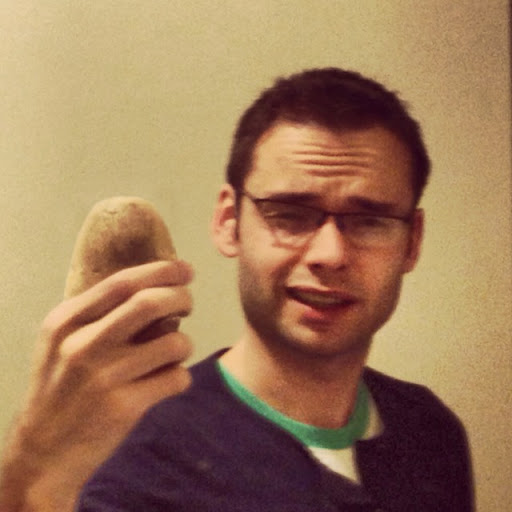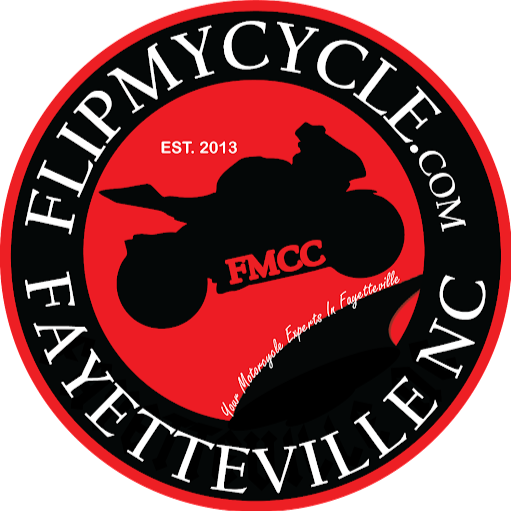David Alan Clayman
age ~70
from Boca Raton, FL
- Also known as:
-
- David A Clayman
- David Dr Clayman
- David H Clayman
- Dave A Clayman
- David Watts
- David D
- Phone and address:
-
19549 Estuary Dr, Boca Raton, FL 33498
5612518398
David Clayman Phones & Addresses
- 19549 Estuary Dr, Boca Raton, FL 33498 • 5612518398
- Coconut Creek, FL
- Tamarac, FL
- 2730 Forest St, Jacksonville, FL 32257
- Palm Beach Gardens, FL
- Lacey, WA
- Port Clinton, PA
Work
-
Company:Beaches MRI
-
Address:7186 N University Dr, Tamarac, FL 33321
-
Phones:9547224500
Education
-
School / High School:Wright State University / Main Campus1981
Skills
Bilingual ( Spanish)
Languages
English
Awards
Healthgrades Honor Roll
Ranks
-
Certificate:Diagnostic Radiology
Specialities
Neuroradiology
Medicine Doctors

Dr. David A Clayman, Tamarac FL - MD (Doctor of Medicine)
view sourceSpecialties:
Neuroradiology
Address:
Beaches MRI
7186 N University Dr, Tamarac, FL 33321
9547224500 (Phone)
7186 N University Dr, Tamarac, FL 33321
9547224500 (Phone)
Certifications:
Diagnostic Radiology
Neuroradiology, 1999
Neuroradiology, 1999
Awards:
Healthgrades Honor Roll
Languages:
English
Hospitals:
Beaches MRI
7186 N University Dr, Tamarac, FL 33321
University Hospital & Medical Center
7201 North University Drive, Tamarac, FL 33321
7186 N University Dr, Tamarac, FL 33321
University Hospital & Medical Center
7201 North University Drive, Tamarac, FL 33321
Education:
Medical School
Wright State University / Main Campus
Graduated: 1981
Wright State University / Main Campus
Graduated: 1981

David A. Clayman
view sourceSpecialties:
Neuroradiology
Work:
Beaches MRI
7186 N University Dr, Fort Lauderdale, FL 33321
9547224500 (phone), 9547224100 (fax)
7186 N University Dr, Fort Lauderdale, FL 33321
9547224500 (phone), 9547224100 (fax)
Education:
Medical School
Wright State University Boonshoft School of Medicine
Graduated: 1981
Wright State University Boonshoft School of Medicine
Graduated: 1981
Languages:
English
Portuguese
Spanish
Portuguese
Spanish
Description:
Dr. Clayman graduated from the Wright State University Boonshoft School of Medicine in 1981. He works in Tamarac, FL and specializes in Neuroradiology.

David Alan Clayman, Tamarac FL
view sourceSpecialties:
Radiologist
Address:
7186 N University Dr, Tamarac, FL 33321
Education:
Wright State University, Boonshoft School of Medicine - Doctor of Medicine
Board certifications:
American Board of Radiology Certification in Diagnostic Radiology (Radiology)
Resumes

Owner
view sourceLocation:
Washington, DC
Industry:
Medical Practice
Work:
Afddaa 2007 - 2010
Managing Member
David A Clayman Md 2007 - 2010
Owner
Managing Member
David A Clayman Md 2007 - 2010
Owner
Skills:
Blogging
Broadcast
Casual Games
Community Management
Computer Games
Content Strategy
Digital Media
Editing
Editorial
Entertainment
Game Design
Illustration
Interactive Entertainment
Interviews
Mmo
Mobile Games
Monetization
New Media
Online Gaming
Premiere
Publishing
Social Games
Social Media
Team Building
Video Games
Web Content
Web Content Creation
Iphone
Broadcast
Casual Games
Community Management
Computer Games
Content Strategy
Digital Media
Editing
Editorial
Entertainment
Game Design
Illustration
Interactive Entertainment
Interviews
Mmo
Mobile Games
Monetization
New Media
Online Gaming
Premiere
Publishing
Social Games
Social Media
Team Building
Video Games
Web Content
Web Content Creation
Iphone

David Clayman
view source
David Clayman North Miami, FL
view sourceWork:
FISHER ISLAND BEACH CLUB
2011 to 2000
Server, Food Expediter, Busser KARA
2009 to 2000
DJ and Karaoke Host RIVIERA COUNTRY CLUB
Coral Gables, FL
2006 to 2009
Server, Bartender, Supervisor MIAMI-DADE COUNTY PUBLIC SCHOOLS
Miami, FL
2003 to 2007
Substitute Teacher MIAMI-DADE COUNTY PUBLIC SCHOOLS
Doral, FL
2004 to 2005
Server YELLOWCAB OF TALLAHASSEE
Tallahassee, FL
2002 to 2002
Driver
2011 to 2000
Server, Food Expediter, Busser KARA
2009 to 2000
DJ and Karaoke Host RIVIERA COUNTRY CLUB
Coral Gables, FL
2006 to 2009
Server, Bartender, Supervisor MIAMI-DADE COUNTY PUBLIC SCHOOLS
Miami, FL
2003 to 2007
Substitute Teacher MIAMI-DADE COUNTY PUBLIC SCHOOLS
Doral, FL
2004 to 2005
Server YELLOWCAB OF TALLAHASSEE
Tallahassee, FL
2002 to 2002
Driver
Education:
FLORIDA INTERNATIONAL UNIVERSITY
Aug 2006
Bachelors of the Arts in Liberal Studies FLORIDA STATE UNIVERSITY
Aug 1999
Associates of the Arts in Liberal Arts
Aug 2006
Bachelors of the Arts in Liberal Studies FLORIDA STATE UNIVERSITY
Aug 1999
Associates of the Arts in Liberal Arts
Skills:
Bilingual ( Spanish)
Name / Title
Company / Classification
Phones & Addresses
Manager
Beaches Open Mri of Tamarac Ll
Business Services at Non-Commercial Site
Business Services at Non-Commercial Site
19549 Estuary Dr, Boca Raton, FL 33498
Manager
Beaches Open Mri of Tamarac, LLC
7186 N University Dr, Fort Lauderdale, FL 33321
Manager
MY TOWN PIZZA LLC
Eating Place
Eating Place
7168 University Dr, Fort Lauderdale, FL 33321
Medical Doctor
David Alan Clayman
Business Services at Non-Commercial Site
Business Services at Non-Commercial Site
7162 N University Dr, Fort Lauderdale, FL 33321
David Clayman MD
Radiology
Radiology
7186 N University Dr, Fort Lauderdale, FL 33321
9547224500
9547224500
Managing
Impression Imaging LLC
Nonclassifiable Establishments
Nonclassifiable Establishments
7180 N University Dr, Fort Lauderdale, FL 33321
ManagingPrincipal
The Croft Offshore, LLC
Business Services at Non-Commercial Site · Nonclassifiable Establishments
Business Services at Non-Commercial Site · Nonclassifiable Establishments
1030 Bayside Ln, Fort Lauderdale, FL 33326
ManagingDirector
David A. Clayman, M.D., LLC
19549 Estuary Dr, Boca Raton, FL 33498
Us Patents
-
Method Of Utilizing A Cerebral Instrument Guide Frame
view source -
US Patent:54745640, Dec 12, 1995
-
Filed:Apr 1, 1994
-
Appl. No.:8/221901
-
Inventors:David A. Clayman - Jacksonville FL
Tai Q. Nguyen - Jacksonville FL -
International Classification:A61B 503
-
US Classification:606130
-
Abstract:A cerebral instrument guide includes first and second arcs with aligned openings adjacent their ends, the openings defining a common axis about which the arcs are pivotal. The rods are mounted for movement along the common axis into contact with a human patient's auditory meati. A nasal bridge fixation element mounted on the first arc, as well as orbit pads, engage the bridge of a patient's nose, and his/her bony orbits. The appropriate angle to which the arcs should be pivoted with respect to each other is calculated by a computer program, as is the position to which a tubular instrument guide, slidable along the second arc and a projection from it intersecting the mid point of the common axis, is to be positioned to mark the burr hole on the patient's skull for performing a neurological procedure, such as a ventriculostomy. A needle is passed through the tubular instrument guide to mark the burr hole site. The cerebral instrument guide frame may be left in place, or removed, while a stereotactic instrument placement guide is used (after the burr hole is formed) to properly position the neurological instrument (e. g.
-
Stereotactic Instrument Guided Placement
view source -
US Patent:53000803, Apr 5, 1994
-
Filed:Nov 1, 1991
-
Appl. No.:7/786278
-
Inventors:David Clayman - Jacksonville FL
Tai Q. Nguyen - Jacksonville FL -
International Classification:A61B 5103
-
US Classification:606130
-
Abstract:A stereotactic neurological instrument placement guide is utilized to facilitate ventriculostomy procedures, or other neurological procedures such as biopsy, radioactive seed placement, and lesion generation. The guide has a pair of point members disposed on a common linear axis. The proposed position of a burr hole in the patient's skull is marked, the location of a target point (e. g. ventricle) within the patient's skull is decided upon, and the patient is given a CT or MRI scan. Utilizing data from the scan, a coordinate line is calculated between the burr hole proposed position and the target point. Utilizing the calculated coordinate line, a fixing point on the patient's skull opposite the proposed position of the burr hole is determined, and the fixing point is marked. The instrument guide is placed into operative association with the patient's skull so that the opposed point members engage the burr hole and the fixing point, and then a neurological instrument is passed into the burr hole positively guided by the instrument guide until the instrument reaches the target point at which a neurological procedure is performed. Calculations establishing the coordinate line are obtained by vector parameterization, utilizing a programmable scientific calculator.
-
Apparatus And Methods For Elevating A Patient To Facilitate X-Ray Photography
view source -
US Patent:52875776, Feb 22, 1994
-
Filed:Jan 11, 1993
-
Appl. No.:8/003014
-
Inventors:Ross L. Bremer - Jacksonville FL
David A. Clayman - Jacksonville FL -
International Classification:A47C 2708
A61G 710 -
US Classification:5644
-
Abstract:An inflatable bladder is formed of translucent material and includes a plurality of longitudinally extending tubes seamed one to the other in side-by-side generally parallel relation. End tubes extend at right angles to the longitudinally extending tubes, with all of the tubes being in fluid communication one with the other. The longitudinally extending tubes and the end tubes are sized and/or connected one to the other such that, upon inflation, the inflated bladder is supported by the inflated end tubes, with the underside of the longitudinally extending tubes elevated above the surface supporting the end tubes sufficiently to define a recess for receiving an X-ray plate or cassette. Manual movement of the patient is entirely avoided.
-
Cerebral Instrument Guide Frame And Procedures Utilizing It
view source -
US Patent:53304853, Jul 19, 1994
-
Filed:May 18, 1993
-
Appl. No.:8/062633
-
Inventors:David A. Clayman - Jacksonville FL
Tai Q. Nguyen - Jacksonville FL -
International Classification:A61B 1700
-
US Classification:606130
-
Abstract:A cerebral instrument guide includes first and second arcs with aligned openings adjacent their ends, the openings defining a common axis about which the arcs are pivotal. The rods are mounted for movement along the common axis into contact with a human patient's auditory meati. A nasal bridge fixation element mounted on the first arc, as well as orbit pads, engage the bridge of a patient's nose, and his/her bony orbits. The appropriate angle to which the arcs should be pivoted with respect to each other is calculated by a computer program, as is the position to which a tubular instrument guide, slidable along the second arc and a projection from it intersecting the mid point of the common axis, is to be positioned to mark the burr hole on the patient's skull for performing a neurological procedure, such as a ventriculostomy. A needle is passed through the tubular instrument guide to mark the burr hole site. The cerebral instrument guide frame may be left in place, or removed, while a stereotactic instrument placement guide is used (after the burr hole is formed) to properly position the neurological instrument (e. g.
License Records
David A Clayman
Address:
19549 Estuary Dr, Boca Raton, FL
7186 N University Dr, Tamarac, FL
Phone:
5612511839
License #:
53364 - Active
Category:
Health Care
Issued Date:
Jun 21, 1988
Effective Date:
Jan 1, 1901
Expiration Date:
Jan 31, 2018
Type:
Medical Doctor
Googleplus

David Clayman
Work:
Bethesda Softworks - Brand Manager
Education:
Connecticut College
Tagline:
Clear the way for the greatest RPG on Xbox.

David Clayman

David Clayman
Youtube
Classmates

David Clayman
view sourceSchools:
Laurel High School Los Alamitos CA 1985-1987
Community:
Lynn Shoopman, Cathie Ham

David A Clayman
view sourceSchools:
Swampscott High School Swampscott MA 1961-1965
Community:
Janet Hoffman, Wendy Craig, Debby Bloch, Vaughn Colangelo, Phyllis Sinman, Gail Freedman, Jason Goldstein, Patricia Gallo, Michael Dowey, Thalia Carr, Marcia Grubb, Robert Johnson

David Clayman
view sourceSchools:
Stanley Elementary School Swampscott MA 1956-1963
Community:
Jose Tosado, Joseph Halsted, Ned Fitzhugh, Jeffrey Buckley, Robert Nielsen, Alexander Fitzherbert, Randall Tuttle, Stephen Hopkins, William Stephenson, Duane Minton, John Sullivan

Stanley Elementary School...
view sourceGraduates:
Katie Blandford (1989-1991),
Tracey Sofronas (1979-1987),
Jaime Dusseault (1993-1998),
David Clayman (1956-1963),
Mattthew Paster (1992-1996)
Tracey Sofronas (1979-1987),
Jaime Dusseault (1993-1998),
David Clayman (1956-1963),
Mattthew Paster (1992-1996)

University of Vermont - G...
view sourceGraduates:
David Clayman (1970-1974),
Chris Elkins (1975-1979),
Chip Brewster (1983-1986),
Joanne Pedersen (1968-1969),
Glenn Livingston (1995-1998)
Chris Elkins (1975-1979),
Chip Brewster (1983-1986),
Joanne Pedersen (1968-1969),
Glenn Livingston (1995-1998)

Trinity College, Hartford...
view sourceGraduates:
David Kayner (1950-1955),
Dan Howe (1974-1977),
David Clayman (1966-1970),
Paul Stanton (1985-1989),
Paul Eno (1977-1979),
Christopher Doyle (1981-1985)
Dan Howe (1974-1977),
David Clayman (1966-1970),
Paul Stanton (1985-1989),
Paul Eno (1977-1979),
Christopher Doyle (1981-1985)

Buckingham Browne & N...
view sourceGraduates:
David Clayman (1990-1994),
Jill Litner (1978-1982),
Evan Bageris (1988-1992),
Christal Miller (1969-1973),
Kim Postlethwaite (1969-1973)
Jill Litner (1978-1982),
Evan Bageris (1988-1992),
Christal Miller (1969-1973),
Kim Postlethwaite (1969-1973)

Tabor Academy, Marion, Ma...
view sourceGraduates:
David Clayman (1962-1966),
Robert Jewett (1961-1965)
Robert Jewett (1961-1965)

David Clayman
view sourceFriends:
John Tye, Sharon Weinzimer, Heather Hawthorne, Mary-Margaret Zablocki
Flickr
Plaxo

David A. Clayman, Ph.D.
view sourceCharleston, WV
Get Report for David Alan Clayman from Boca Raton, FL, age ~70













